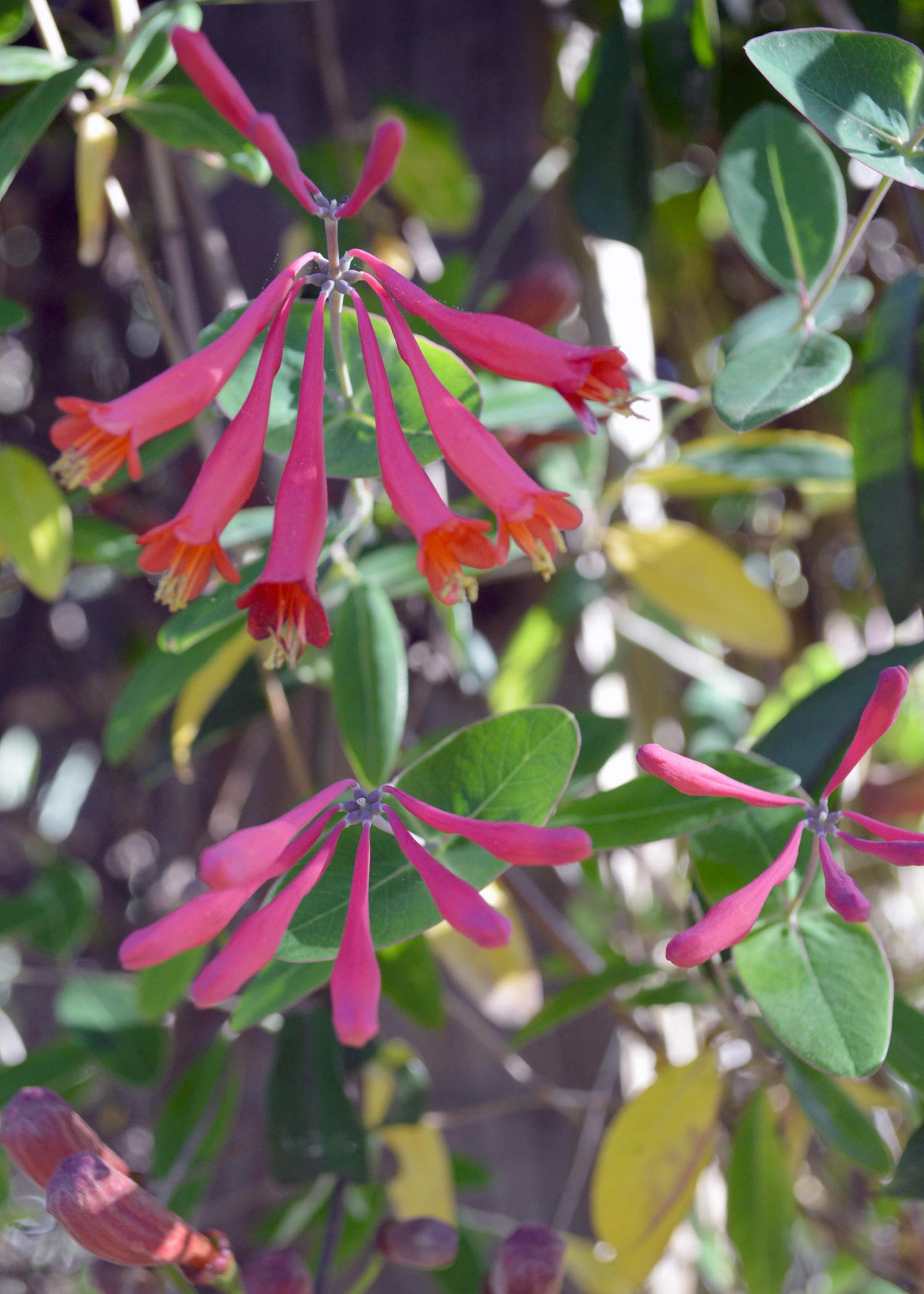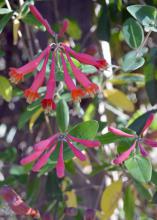Information Possibly Outdated
The information presented on this page was originally released on July 18, 2014. It may not be outdated, but please search our site for more current information. If you plan to quote or reference this information in a publication, please check with the Extension specialist or author before proceeding.
Attract hummingbirds with native plants
MISSISSIPPI STATE -- Small in size but large in visual appeal, hummingbirds are one of the most popular birds around for watching and feeding.
Hummingbirds get their name because of the humming sound created by their wings, which beat at high frequencies audible to humans. They hover in mid-air with rapid wing beats, typically around 50 times per second. Their wing beats can be as high as 200 times per second, allowing them to fly at speeds exceeding 30 mph, even backwards or upside down.
This means that hummingbirds need a lot of food. A hummingbird can weigh less than a penny, but it has one of the highest metabolisms in the animal kingdom and must feed often to sustain its high energy.
In nature, hummingbirds depend upon many native plants for food. They drink the nectar of flowers and eat small insects and spiders. These insects and spiders supply young hummingbirds and nesting females with much-needed protein during these critical life stages.
There are a number of native vines, shrubs and herbaceous plants that produce flowers favored by feeding hummingbirds. It is easy to promote these plants in your yards, gardens and landscapes.
Native wildflowers that attract these birds include wild iris, salvia, wild mints and plants from the sunflower family. Vines that attract hummingbirds are crossvine, coral honeysuckle and trumpet creeper. Herbaceous plants often visited by these birds include buckeye, wild azalea and wild blueberries.
The flowers of all of these plants tend to be tubular or trumpet-shaped, and hummingbirds access the nectar hidden deep inside with their exceptionally long, specialized tongues.
Oftentimes, many of these native plants are already on your land or around your yard and can be encouraged by less frequent mowing and mowing fields and pastures after late fall. You can also cultivate these plants in gardens.
There are numerous sources of native plants for home landscapes. Contact your local nurseries to see what they offer. For a list of flowering plants -- both native and non-native -- that attract hummingbirds, visit http://tinyurl.com/msuhummingbird.
An excellent source of photographs of native plants and information about their propagation can be found at the University of Texas Lady Bird Johnson Wildflower Center website: http://www.wildflower.org/explore.php.
Many companies sell hummingbird feeders. If you want to supplement your native hummingbird plants with commercial feeders, choose those with a bright red color at or near the “nectar” source. Hummingbirds are drawn to red.
The hummingbird you are most likely to see in Mississippi is the ruby-throated hummingbird. Other hummingbird species that have been observed here include the white-eared hummingbird, buff-bellied hummingbird, black-chinned hummingbird, Anna’s hummingbird, calliope hummingbird, broad-tailed hummingbird, rufous hummingbird, and Allen's hummingbird. Some are more common than others.

Editor’s Note: Extension Outdoors is a column authored by several different experts in the Mississippi State University Extension Service.




